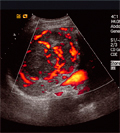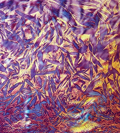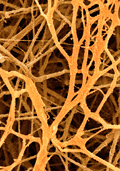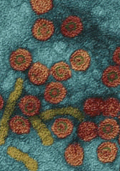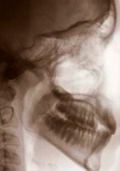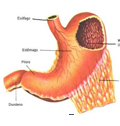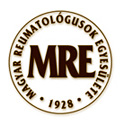The eLitMed.hu medical portal uses computer cookies for convenient operation. Detailed information can be found in the Cookie-policy.
Lege Artis Medicinae - 2009;19(01)
Content
[Importance of statin therapy in stroke prevention]
[Stroke is the third leading cause of death and a leading cause of major adult disability in developed countries. The annual incidence of hospitalized stroke varies between 400-500 per 100 000 inhabitants every year in Hungary. In the past decade, cholesterol lowering with 3- hydroxy-3-methylglutaryl-coenzyme A (HMGCoA) reductase inhibitors (statins) has proved to reduce risk of stroke in patients with and without coronary disease (CAD). In patients with CAD, statin therapy reduces the risk of first stroke by 25% to 35% versus placebo and, moreover, intensive statin therapy to LDL-C targets below 2.6 mmol/L (100 mg/dL) appears to reduce the risk further. More recently it has also been shown that intensive statin therapy can reduce risk of recurrent stroke in nondiabetic as well as diabetic patients with recent stroke or transient ischaemic attack but no CAD. The overall reduction of stroke and TIA was 23%. Evidence from retrospective studies suggests that in addition to risk reduction statin pretreatment may improve stroke outcome. It may due to their pleiotropic effects that include improvement of endothelium function, anti-inflammatory, antithrombotic, and immunomodulatory effects. As statins have both an excellent safety profile and simple administration, physicians should consider using statins, at dosages shown to have efficacy in clinical trials, in all patients whose cardiovascular risk profile puts them at high risk of stroke.]
[New possibilities in the management of hepatocellular carcinoma]
[The prognosis of primary hepatocellular carcinoma (HCC) has been poor until recently. Most patients are diagnosed at an advanced stage, with a poor liver function, thus therapeutic possibilities are limited. In high-risk patients, active surveillance and HCC screening is essential for early diagnosis. Experience with systemic chemotherapy has been disappointing with low response rates and high rates of adverse effects. Recently, novel treatment options have emerged, including the use of specific targeted agents, blockers of signaling pathways involved in hepatocarcinogenesis. Sorafenib, an oral multikinase- inhibitor is the first systemic agent to demonstrate survival benefit in advanced hepatocellular cancer. Several new, promising therapeutic options are being tested in clinical trials. The present review gives an overview of evolving diagnostic and therapeutic strategies.]
[Ways and tools of the organism's defence in atherosclerosis - The mysterious HDL particle]
[Every type of injury elicits an immediate defending, preventing response in the living organism, which involves the whole organism’s participation. In case of a single effect, the events and symptoms together can be designated as “acute phase reaction syndrome”. The pathogenic constituents' effects on the arterial wall are, however, permanent, though varying in composition and intensity. The protecting reaction serving the prevention of the continuously arising vessel wall lesion is inflammation itself. Beginning of the inflammatory phenomenon carries within itself the criteria of the acute tissue response but it takes on involuntarily chronic features as a consequence of the chronic etiology. In the arterial wall ongoing vasculitis affects all the three layers of the vessels. The HDL particle is involved in triggering and progression of vasculitis. It transports cholesterol from the tissues to the liver, defends the integrity and physiological functions of the endothelium, exerts antioxidant effects, and it has the capacity to inhibit secretion and effects of cytokines, cell migration and the thrombotic process. These are all together serving as controllers of the ongoing vasculitis in the artery wall. Composition of the HDL particle is exceptionally complex. Almost half of the identifiable - at least 48 - components could be considered as acute phase reactants, and almost as many are related to cholesterol and lipoprotein metabolism. Participation of proteinase inhibitors and complement system components and regulators is very important for its function. Some constituents have a glycosaminoglycan binding capacity. The physiological roles of some acute phase reactants are not completely identified as today. This is especially valid concerning the characteristics of the HDL particle as an entity. Nevertheless, on the basis of present study data, it is ascertainable that HDL is an acute phase reactant; it is an inherent part of the natural, innate immune system of the organism. However, it is only one single component of the large group of the anti-inflammatory mechanisms and factors.]
[Rivaroxaban: a new and efficient direct factor Xa inhibitor anticoagulant]
[Rivaroxaban is a directly acting, orally administrable selective inhibitor of the activated blood clotting factor X, which could replace low molecular weight heparins and oral coumarintype anticoagulants. It was registered by European (EMEA) and US authorities (FDA) for the prevention of venous thrombotic events in orthopedic surgery. It is being investigated in phase III studies for the treatment of established, symptomatic venous thrombosis, surgical thromboprophylaxis, prevention and treatment of pulmonary embolism, as well as in ST-elevation and non-ST-elevation myocardial infarction. Until this time it was given to more than 24,000 patients. Its sideeffect profile is favorable, bleeding risk is similar to other drugs in its group, and other side effects are acceptable, although it may result in elevation of hepatic enzymes. The drug is investigated at present in the secondary prevention of stroke in atrial fibrillation and in the prevention of acute ischemic events in acute coronary syndromes. It could be one of the first alternative drugs for the presently used oral vitamin K antagonist anticoagulant products.]
[Efficacy of peginterferon alfa-2a and -2b plus ribavirin in the routine treatment of patients with chronic hepatitis C]
[INTRODUCTION - Combination of peginterferon plus ribavirin is the standard treatment for chronic hepatitis C virus (HCV) infection. Two types of peginterferon are available. The aim of this retrospective study was to find out whether the choice of peginterferon influenced the patient’s chance of recovery. PATIENTS AND METHODS - Between 2004 and 2007, 142 patients with HCV genotype 1 hepatitis with or without cirrhosis (107 treatmentnaive, 35 previously treated) were treated with 180 ug/week peginterferon alfa-2a (Group A) or 1.5 ug/kg/week peginterferon alfa-2b (Group B) plus ribavirin. Examination and treatment of patients followed the rules of the national guideline. Patients were not randomized in any way. Group A consisted of 78 patients and Group B included 64 patients. Eight patients dropped out for various reasons (5 from Group A, 3 from Group B). There was no statistically significant difference in the baseline characteristics and the cumulative doses of the drugs between Group A and B, so the treatment results were comparable. RESULTS - Sustained virological response (undetectable HCV ribonucleic acid serum levels 24 weeks after the end of treatment) occurred in 42.5% of patients from Group A and 37.7% from Group B. When focusing on treatment-naive patients only, sustained virological response was found in 48.2% of patients in Group A and 46.7% in Group B. Result of the treatment was better if the patient was treatment-naive, if there was no cirrhosis, and if early virological response at 12 weeks was achieved. CONCLUSION - Patients treated with peginterferon alfa-2a plus ribavirin achieved sustained virological response at a higher rate than those with peginterferon alfa-2b plus ribavirin, however, the difference was not statistically significant.]
[Medicine-induced osteonecrosis of the jaw]
[INTRODUCTION - Bisphosphonates are often used in the treatment of osteoporosis and of certain tumors with bone defects. Thus their rare side effect, necrosis of the jaw becomes more and more frequent. CASE REPORT - Between September 2005 and March 2008 we have treated 40 patients with bisphosphonate induced osteonecrosis in the maxillofacial region at our hospital. From this group, we selected two cases where typical complications emerged. CONCLUSION - Based upon data from the international literature and on our own experiences, we would like to draw attention to the importance of prevention. If symptoms are emerging, referral to a specialized department prepared to the treatment of this condition is recommended.]
[Relationships in recovery, recovery in relationships]
[INTRODUCTION - Some of the recent researches based on analyses of autobiographies pointed out, that the quality and the quantity of our social relations are in connection with our life longevity, and the frequency of words referring social roles and integration gives a respective measurement possibility of it. Conception of the term “social words” had been introduced. The influence of the degree of social support to the recovery from alcohol addiction is also a well-known phenomenon. Based on the above we supposed that examining their autobiography vocabularies we find special differences which can show the distinction between the social support of the relapsed and recovering addicted persons. We planned to prove the being of these special differences via revealing bias of the frequency and pattern of social word usage. PATIENTS AND METHODS - Two separate groups were created for purpose of the examination. The first consisted of relapsed alcohol dependent persons, who were treated in hospital (department of addiction psychiatry) diagnosed alcohol-dependent (F 10.2) (and nothing else) at least twice within a year (N=30). We chose earlier treated (because of alcohol-dependency, and nothing else mental disease) persons who had been being abstinent for at least 2 years into the second group (N=20). Beside the earlier diagnosis we used the parts of the ASI test to sreen any other mental diseases. We created similar groups with regards to gender, age and qualification. We collected autobiographies from the persons, and made two common documents of them. Afterwards we compared these documents by the Atlas.ti 5.0 (trial free version) content analysing software. We defined the frequency of the found social words in the rate of these words and the sum of the words in the whole text. We found the most prominent difference between the frequency of social words referring to the family and relatives, opposite the words dealing with friendship. RESULTS - In the latter case we could not detect any difference between the two groups. We got results confirming our hypothesis in the frequency of such words as “help”, “love”, “give” and “get”. We experienced in connection with the pattern that the words referring to social organisations, for example “team”, “community”, “company”, “club”, “meeting”, “collective” and the word “guest” practically did not appear (R<0.001) in the texts of relapsed persons, while they could be detected in the case of the recovering group (R=0.023). We did khisquare test to compare the frequency in the mentioned categories and we experienced significant differences between the social word usage of the two groups. CONCLUSION - Our results confirmed that the recovery from alcohol addiction was related to the quality and quantity of person's social relations, what we can get relevant information from the frequency of social words in the autobiographies about, so the high frequency of the social words can be considered as a good predictor of recovery.]
1.
Clinical Neuroscience
Is there any difference in mortality rates of atrial fibrillation detected before or after ischemic stroke?2.
Clinical Neuroscience
Factors influencing the level of stigma in Parkinson’s disease in western Turkey3.
Clinical Neuroscience
Neuropathic pain and mood disorders in earthquake survivors with peripheral nerve injuries4.
Journal of Nursing Theory and Practice
[Correlations of Sarcopenia, Frailty, Falls and Social Isolation – A Literature Review in the Light of Swedish Statistics]5.
Clinical Neuroscience
[Comparison of pain intensity measurements among patients with low-back pain]1.
Clinical Neuroscience Proceedings
[A Magyar Stroke Társaság XVIII. Kongresszusa és a Magyar Neuroszonológiai Társaság XV. Konferenciája. Absztraktfüzet]2.
3.
Journal of Nursing Theory and Practice
[A selection of the entries submitted to the literary contest "Honorable mission: the joys and challenges of our profession" ]4.
Journal of Nursing Theory and Practice
[End of Life and Palliative Care of Newborns in the Nursing Context]5.
Journal of Nursing Theory and Practice
[Aspects of Occupational Health Nursing for Incurable Patients ]




